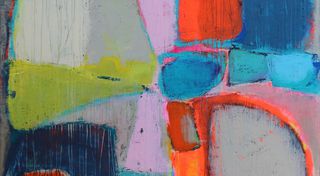

Biography
Artist Alex Grey was born in 1953 in Ohio. His very spiritual works are respected by all in the art world. Alex Grey mixes psychedelia and symbolism brilliantly. His father being a graphic designer, he introduced him early to drawing and encouraged him to be creative. From a young age, he buried insects and dead animals in his garden, which is not surprising since death and transcendence will be recurring themes in his work.
Alex Grey studied at Columbus College of Art and Design then dropped out and began painting billboards for Columbus Outdoor Advertising before moving to Boston to study and work as an assistant in the studio of conceptual artist Jay Jaroslav, in the during his studies at the School of the Museum of Fine Arts in Boston. Subsequently, he met Allyson Rymland Grey, with whom he experimented with LSD.
Alex Grey goes from a thought of agnostic existentialism, that is to say from a search for truth by immediate experience, to radical transcendence, a truth which therefore comes from a higher order. He then worked for 5 years in the Department of Anatomy at Harvard, where he prepared bodies for autopsy, then he taught research on the body and mind, for he also made illustrations for the university. Finally, he teaches artistic anatomy and body sculpture at New York University. In 1972, he began a series of performances akin to rites of passage. They are doomed to move from an egocentric status to a sociocentric and theocentric status. Identity is therefore based on society, or on God. Grey's series of large format canvases "The Sacred Mirrors" is very famous, she explores the details of body and mind, and highlights the divine nature of each. It took 10 years to complete this series. Alex Grey's way of representing the human body is unique: very detailed, like an x-ray, he introduces multidimensional perspectives that he applies to human themes: prayer, birth, meditation, death, birth… Facts of galactic whirlpools and fire, his characters appear to us like particles of the universe.
The bright colors, the energies that emerge from them, the worked and geometric compositions inscribe it in psychedelia, particularly popular in the 60s with the hippie movement. Alex Grey's work also joins symbolism. Movement which appeared at the end of the 19th century, symbolism frees itself from inspiration according to nature, and favors interaction with the imagination and the spirit. His work is very spiritual and will gain great respect, it will be exhibited at the New Museum in New York, at the Grand Palais in Paris, or at the Sao Paulo Biennale. It also illustrates Nirvana's album covers for Rock Tool and In Utero.
Nationality




